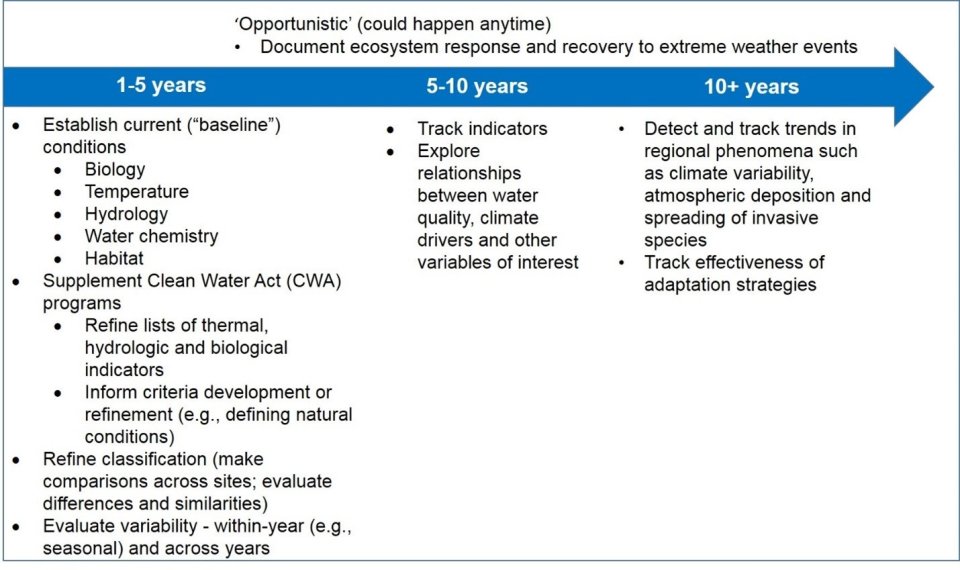Data Analysis
The RMN data can be retrieved, analyzed, summarized, and visualized in many ways. Examples include scatterplots, simple correlation and regression analyses, analysis of variance (ANOVA) and non-metric multidimensional scaling (NMDS) ordinations. Each of these techniques can be used to explore differences or trends over time, as well as relationships between the different types of data. Time series, box, and cumulative distribution function (CDF) plots also are useful ways to visualize and explore patterns in the data.
The intent is to analyze RMN data at a regional scale, which will improve detection of trends over time and allow for detection of widespread patterns that might otherwise be missed at the local level. The types of analyses that are most appropriate depend on the period of record (Figure 1).
Example analyses using the biological, thermal, and hydrological RMN data include:
- Characterizing current conditions and similarities/differences across sites
- Analyzing trends over time or along gradients
- Analyzing relationships between different types of data
- Evaluating response and recovery to extreme weather events
Sections 4 and 5 of the EPA Regional Monitoring Network (2016) final report describe ways in which the RMN data can be summarized and used.
EPA and RMN partners have developed several free tools and training materials to make QA/QC, summarizing, visualizing and managing continuous sensor data easier. Additional tools help to prepare and summarize biological data. Additional information is accessible from the List of Publications and Resources page.

Analysis of annual biological data collected at RMN sites will enable quantification of natural variability. Those data will enhance understanding of how natural variation affects consistency of biological condition scores and metrics from year to year. Quantification of natural variability is important because some water quality standards are based on comparisons with natural conditions.
Longer term changes that could affect aquatic life overall include:
- increasing average water temperatures and temperature fluctuations;
- changing levels of dissolved oxygen;
- changing frequency and magnitude of extreme precipitation;
- changing timing of ice on/ice off events and spring snowmelt; and
- increased frequency of summer low flow events or low water levels.
